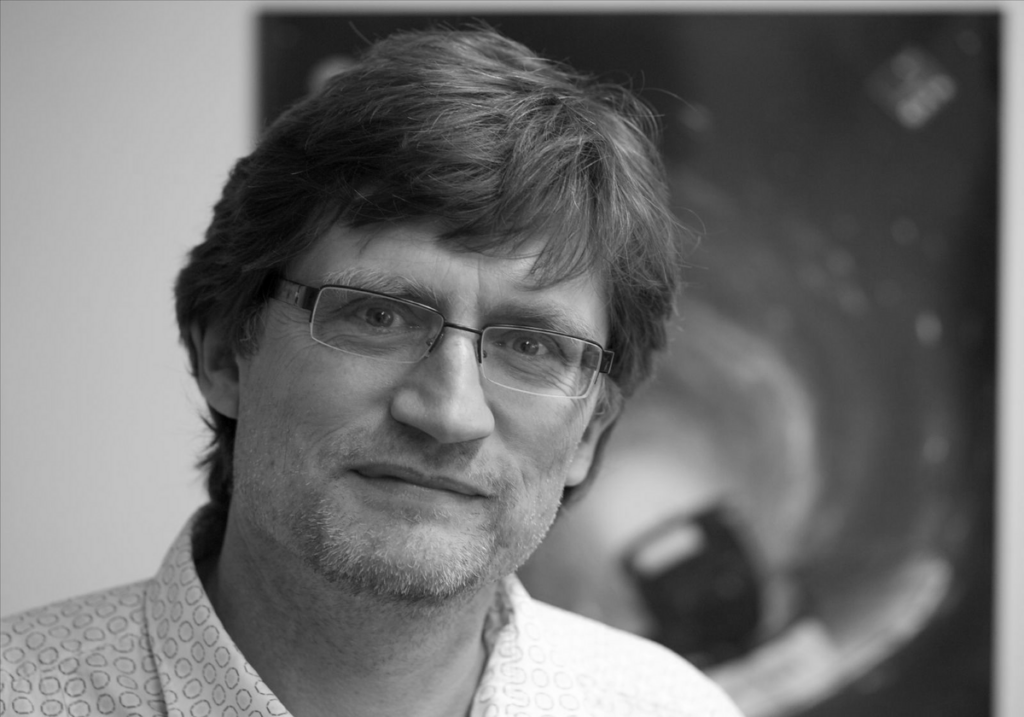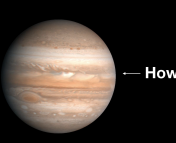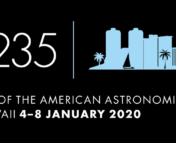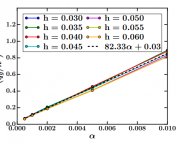This post is to honor the scientific legacy of Willy Kley, a pioneer in the field of protoplanetary disks, who suddenly passed away on December 21st, 2021. Honoring his work and his ability to bring people together, his research group organized a conference dedicated to Willy that took place August 1st to 3rd 2022.
Losing a person is hard, especially if it is unexpected. On December 21st, 2021, the whole research community in the field of protoplanetary disks was in shock when we received the sad news: Prof. Willy Kley has passed away.

Prof. Wilhelm Kley (Willy) was a pioneer in the theoretical research of protoplanetary disks, having conducted and inspired hundreds of research projects. Even before exoplanets were discovered, Willy had programmed his own hydrodynamical code to simulate protoplanetary disks. Since 2000, he has been a professor for computational physics at the institute for astronomy and astrophysics at Tübingen University. Willy was an expert in many topics, including planet-disk interaction, gap forming due to planets in disks, planetary migration, circumbinary disk structure, and the vertical shear instability in disks.
Not only was he an excellent researcher, but he was also very good at bringing people together. Therefore, his research group decided to organize a three-day conference inviting Willy’s collaborators and friends to share our research and acknowledge Willy’s influence in our work.
It was a unique conference. Alongside many scientific talks, discussions, and posters, we had a good and reassuring time sharing memories of Willy. The very first session of the conference was dedicated to remembering Willy as a great colleague and friend, and also his scientific legacy. He supported many researchers to continue their path or reach the next step in their scientific project and career. Many colleagues of his described Willy as a brilliant scientist, kind, generous, enthusiastic, warmhearted, and optimistic.
During the time in Tübingen, we developed an unanimous opinion: the conference did the legacy justice, however, we would have wished to discuss all the topics with Willy himself.

The scientific part of the conference was split into several sessions in the field of planet formation and protoplanetary disks, as these were Willy’s main research fields in the past few years. The first scientific session started with a talk on dust coagulation, the clumping of dust grains, in order to form planets. We were discussing the importance of including this process in planet formation models, as it is often neglected in theoretical studies so far. The next session, on collisional growth, continued the topic of planet formation summarizing the process of dust grains colliding and sticking together to form pebble-sized particles. These pebbles can then further grow to planetesimals (kilometer-sized boulders), possibly again through collisions. During the session, we discussed challenges of that picture like, for example, the collision velocity: if it is too high, the pebbles will crash and fragment, leading into smaller pieces instead of larger ones. We additionally addressed other growth mechanisms such as pebble accretion. In the third session of the day, we had a closer look at planet formation in general. In this session, we considered what the composition of exoplanet atmospheres can tell us about their formation in protoplanetary disks. Because the chemical composition of the disk varies depending on location within the disk and evolutionary state, the atmosphere composition can give insight to where and when an exoplanet could have formed.
The second day of the conference started with observations of protoplanetary disks, reviewing surveys such as MAPS and DSHARP. For a better comparison of theoretical models to observations, models need to be transformed into synthetic observations. The second session of the day was about fluid instabilities in disks. Instabilities are important mechanisms that trigger mixing of materials and pressure differences creating sweet spots for planet formation. One of the focus points of the session was the so-called vertical shear instability which causes the material in the disk to move up and down and mix the vertical layers of a protoplanetary disk. In the final two sessions of the day, the topic was planetary migration. After planets are formed in a disk, they do not necessarily stay at the orbit they were formed in, but can migrate toward or further away from the star. The migration is caused by planet-disk interactions that pull and push the planet through torques. During the session, we reviewed these interactions and their effects, such as formation of rings and gaps in the disk material.
On the third and final day of the conference, we studied circumbinary planets and their formation. Circumbinary planets are orbiting a binary star system. There are several observations of such systems, and numerous observations of circumbinary disks, indicating even more circumbinary planet systems should exist. During the session, we agreed that it is impossible to form planets in circumbinary disks through collisional growth, because the velocities are too high resulting in catastrophic collision and fragmentation – other growth mechanisms must be important here. The second session of the day focused on circumbinary disks, that often show an eccentric inner cavity. The shape of the cavity is affected by binary properties and physical processes such as cooling mechanisms. The disk can also influence the orbital evolution of the binary system: the binary separation can shrink or expand depending on disk properties. In the last session of the conference, we discussed transition disks, which are disks exhibiting an inner cavity of the gas and dust disk. We reviewed the research progress in the past few decades and discussed specific processes such as migration of multiple planets in those disks, eccentric disks, and warped disks. The conference concluded with a summary of the conference by the main organizers.
In spite of the sad circumstances, the conference was able to give great insight into a wide field of topics in the research field. In almost every talk, Willy’s influence on the presented topic was highlighted and memories were shared. The atmosphere was amazingly friendly and collegial. Willy was and is unspeakably missed even more so at such a conference, but it was reassuring and comforting to review the topics and Willy’s huge impact. He and his work will not be forgotten and his legacy will live on as the foundation of our understanding of protoplanetary disks.
List of keynote speakers of all sessions
Dust coagulation – Joana Drążkowska
Collisional growth – Gerhard Wurm
Planet formation – Bertram Bitsch
Observations – Anna Miotello
Fluid instabilities – Hubert Klahr
Planet migration and resonances – Sijme-Jan Paardekooper
Planet migration and resonances (2nd) – Hanno Rein
Circumbinary planets – Richard Nelson
Circumbinary and transition disks – Giovanni Picogna
Special thanks to the main organizers Christoph Schäfer, Anna Penzlin, and to all other organizers and helpers of the conference. Additional thanks to all participants, who made this conference really unique, and to Kees Dullemond, amongst other things for introducing me to Willy a few years ago.
Disclaimer: The author of this bite was part of the organizing committee for the conference, and one of Willy’s friends and collaborators. This article contains the author’s personal opinion on the conference and Willy Kley which may not be everyone’s view.
Astrobite edited by Sabina Sagynbayeva
Featured image credit: https://uni-tuebingen.de/fakultaeten/mathematisch-naturwissenschaftliche-fakultaet/fachbereiche/physik/institute/astronomie-und-astrophysik/computational-physics/mitarbeiter/




